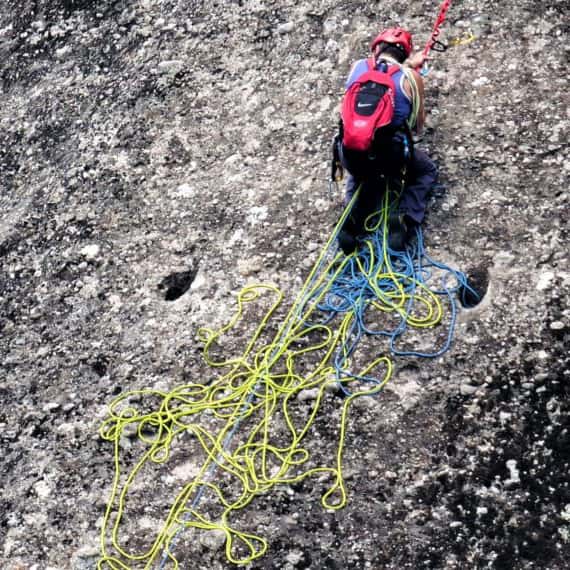Meteora is one of the most extraordinary places in Europe and fully deserving of UNESCO World Heritage status. Discover why you should add Meteora to your Mainland Greece Holiday. Read on to start visiting Meteora in your imagination, and please get in touch if you have any questions.
While we all visit Meteora today for leisure, the first people who visited did so to religious pilgrims arrived in the region in around 985 AD and; over time, with increasing Ottoman incursions from the Turks in the 14th Century, the monks decided to build monasteries on ever more impregnable spots – atop sheer-sided pinnacles only accessible by winches and ropes. Today, most of the 24 monasteries located here are now abandoned and dilapidated and only six of these remarkable feats of religious and engineering remain. Any trip to Meteora will likely be coming from Athens and will also be perfectly paired with our Delphi Trips.
Everyone loves the Greek Islands, and that killer combination of cobalt blue skies, shimmering sea and whitewashed houses is pretty irresistible. Here at Epicure Greece we’re also advocates of the magical and mysterious Greek mainland. And it doesn’t get any more magical than Meteora!
It is no exaggeration to say that Meteora is one of the most extraordinary places in Europe and fully deserving of UNESCO World Heritage status. Meteora’s haunting landscape with its giant rock pillars seemingly dropped from the sky is enchanting, and its views and vistas will stay with you for the rest of your life.

Whether you are new to rock climbing or an experienced climber, rock climbing in Meteora is a great activity, especially as a team-building activity.

Meteora, featuring towering sandstone rocks and age-old monasteries and cloisters, is listed as a UNESCO World Heritage site and ranks as a leading tourist attraction, not only for the region of Thessaly but for Greece as a whole.

Meteora is a famous destination in Greece for its incredible landscapes, hiking views, mountains, and monasteries. All of its sights look extra special during sunrise and sunset.
In Meteora, there are 170 peaks and 870 climbing routes to choose from. The Hellenic Federation of Mountaineering & Climbing is the best resource to check out if you are keen on climbing. Walking is the best way to truly feel connected to the land here. The easiest and shortest routes are those that pass through the pillars closest to Kastraki. Our favorite trail begins from Kastraki and ends up at Fylakes Kalogeron (meaning the Monks’ Jail), the name given to a gigantic cave situated 60 meters above ground level. Views to die for!
Meteora is actually a religious place with amazing Byzantine monasteries. This region is composed of huge rocks on top of which monasteries have been constructed, overlooking a beautiful valley below. Although there were hundreds of monasteries and churches in Meteora in the past, today only 6 of them survive. The Monastery of Grand Meteoron is the most popular sightseeing in Meteora, while the most difficult to go is the Monastery of Holy Trinity.
The Gkertsou Family and the Restaurant Meteora team invite you to feel at home and enjoy a unique gastronomic experience. The family-owned kitchen has been open to all since 1925 and serves guests authentic Greek cuisine using locally sourced ingredients. A true favorite amongst tourists.
Two regional sweet treats you must seek out are ‘sapune’, a local semolina treat (specifically from ‘Robos bakery’, because they do the best one!) and ‘spatula’ (a delicious nutty sponge cake topped with whipped cream and cinnamon).
The biggest and most visited of the remaining monasteries is The Great Metéoron, which was founded by Athanasios the Meteorite in 1356. Be warned, you have to climb over 300 stairs to get to its entrance at 613 metres, but breathtaking views will accompany the whole of the way up.
Meteora is filled with many ruins and hidden gems of a past period when, at the height of the monastic community, the site had close to 24 active monasteries and many hermitages. Hidden among the giant rocks of Meteora one can still see the evidence of all 3 types of monasticism, the eremitic, the skete, and the cenobitic coexisting in the ruins of St. Gregory left by the last hermit-monk inside a small cavern, the skete of St. Antony and the small monastery of St. Nikolas of Badovas.
Would you like to find out more about this destination or speak with one of our Epicureans about the best options in Greece? Reach out to one of our experts who can tailor an unforgettable experience that will be the envy of your friends.